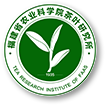Abstract:
Objective Feasibility of replacing wood chips with waste from pruning tea bushes for cultivating Lentinula edodes was evaluated for the organic material utilization.
Method Replacement of wood chips in the conventional mushroom cultivation substrate at various rates with the pruning waste, including branches and leaves, were formulated for the experimentation. Along with no substitution (CK), 20% (PF-5), 40% (PF-4), 60% (PF-3), 80% (PF-2), and 100% (PF-1) of the wood chips normally contained in the culture substrate were replaced by the pruning waste for the treatments. Mycelial growth, disease susceptibility, fruiting body productivity, biological efficiency (BE), and nutritional quality of the shiitake mushrooms grown on the substrates in bags were determined.
Result (1) Disease infection of the treatment mushrooms was significantly less than that of CK. It decreased with increasing wood chip replacement proportions and became significantly different at 60% substitution rate. The mushrooms of the PF-4 treatment showed the fastest mycelial growth at 1.36 mm·d−1, which was significantly higher than that of CK (P<0.05) followed by that of PF-5 (P>0.05). (2) The 1st, 2nd, and 3rd harvests of fresh mushrooms under PF-4 with a combined yield of 718.83 g·bag−1 were 16.20% (P<0.05), 9.70%, 8.45%, and 11.78% (P<0.05), respectively, higher than those under CK. The average BE of the treatments ranged 8.45%–33.90% which were significantly higher than that of control (P<0.05). That of PF-4 was the highest at 60.45%. (3) The crude protein in the pileus decreased from the 1st to the 3rd harvest with the 1st harvest being 4.75%–9.69% higher than under CK. The total amino acids paralleled crude protein with the most increase of 9.96% over CK found in mushrooms grown on PF-4. The crude fiber declined with the rounds of harvest by 1.76%–37.32% on the 1st round, 5.39%–17.12% on the 2nd round, and 14.53%–49.86% on the 3rd round as compared to CK. (4) The output/input ratios of the treatments were significantly higher than that of CK (P<0.05) with increases ranging 78.69%–122.95%.
Conclusion Utilization of tea pruning waste to replace wood chips in the substrate for cultivating shiitake mushrooms seemed feasible. A replacement rate of equal or less than 40% could significantly improve the yield as well as the quality of shiitake mushrooms.




 下载:
下载: